Chatbots in E-commerce:
Everything You Need to Know
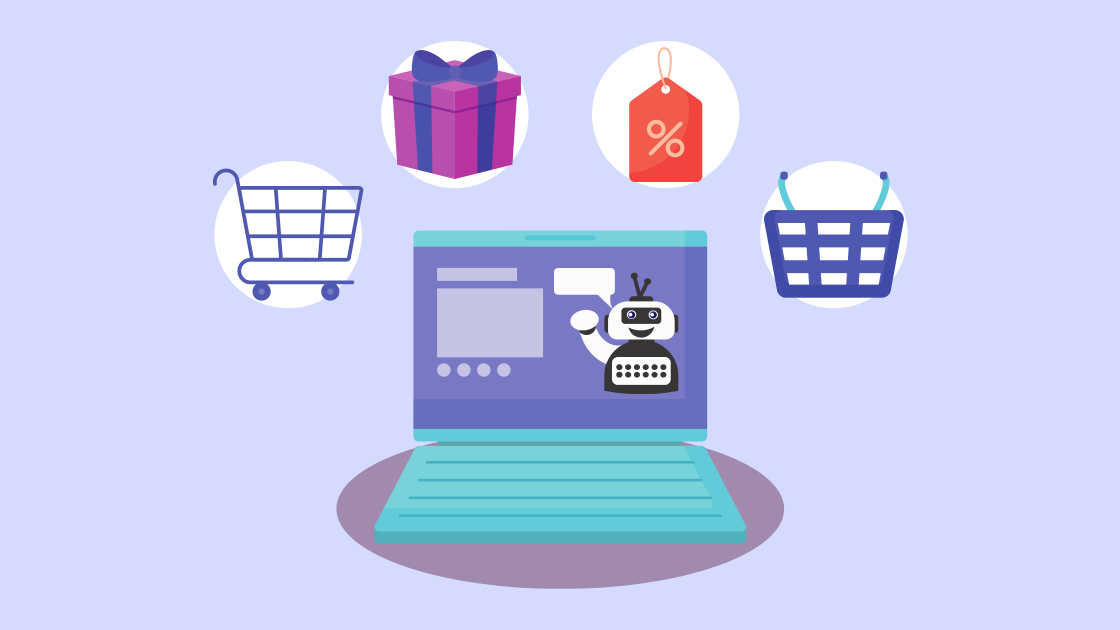

Chatbots are drastically changing the way people interact with brands these days. There are plenty of industries that have already adopted chatbots for their business purposes: travel, hospitality, banking, healthcare, education… the list goes on. But today, we’re going to talk about one of the industries that use chatbots most actively — e-commerce.
E-commerce, also known as electronic commerce, refers to the buying and selling of goods via the Internet. Unlike traditional brick-and-mortar businesses, online stores allow customers to easily find and purchase their desired products in just a few clicks from anywhere without physically visiting the store.
Although it may seem that online shopping has gained popularity quite recently, the history of e-commerce can be traced back to the early 1970s, almost immediately after the invention of the ARPANET.
Since then, e-commerce has evolved in many ways to become a ubiquitous part of shopping today. The global online shopping market keeps growing at a remarkable rate. Just look at the numbers: 93% of internet users have bought at least one product online.
And we are absolutely sure that the total number of online purchases will continue to grow. According to a report from Nasdaq, it is estimated that 95% of purchases will be made online by the year 2040. The e-commerce industry certainly has a great future ahead of it!
A chatbot is a computer program that can simulate a human conversation. Today, you can find chatbots everywhere: on websites, social media, and in mobile apps. They are typically used by businesses for various purposes like customer support, marketing, sales, etc.
According to the way they work, there are two main types of chatbots available on the market: rule-based and AI-powered bots. No matter what type of chatbot it is, they all have a similar purpose: to automate your business processes and enhance customer experience.
Basically, all chatbots work in the following way: a user asks a question or just says something to a chatbot, and the chatbot, in turn, provides a response based on the input from the user. This makes chatbots perfect for dealing with customer FAQs. However, besides answering customer questions, chatbots can perform other actions as well, for example, gathering information or initiating chats.
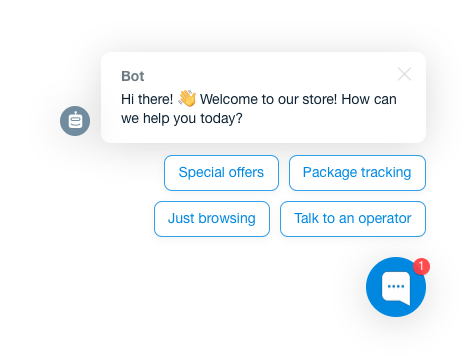
With their growing popularity, chatbots are gradually being adopted in the e-commerce world. What’s more, consumers easily get used to chatbots. 47% of consumers are open to buying items using a chatbot, and 80% of those who have already interacted with bots claim to have had a positive experience. So the burning question is, what benefits can e-commerce chatbots bring to your business? Let’s check out how chatbots can help throughout the customer journey. Simply put, the online shopping journey can be broken down into four main stages:
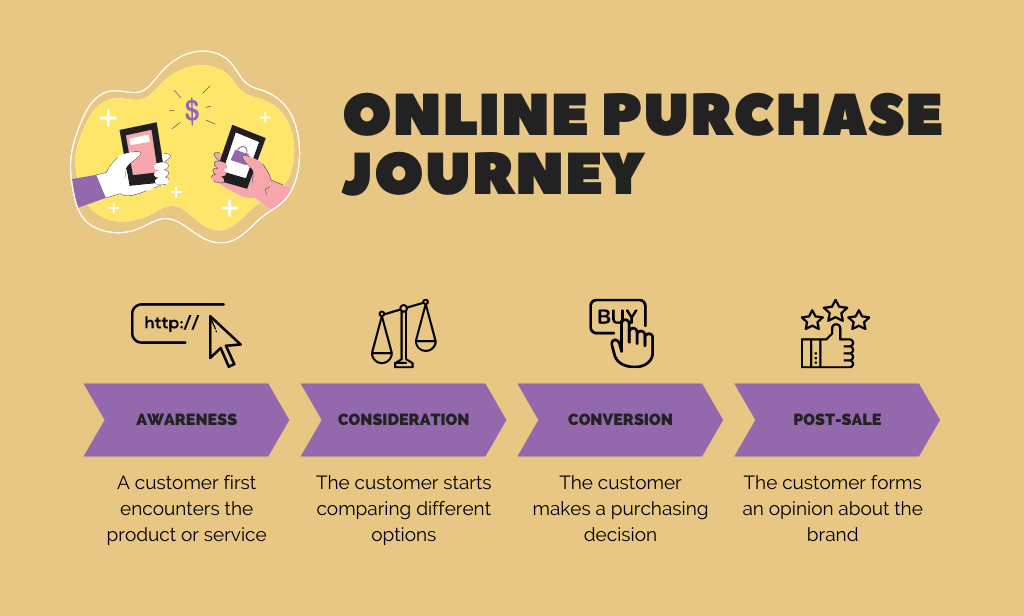
This is the first stage, where your potential customer learns who you are and what you have to offer. Visitors can land on your e-commerce site either intentionally (e.g., from search engine results) or accidentally (e.g., after clicking on an advert).
Your goal at this stage is to attract the visitor, provide the right info, and build trust. Can chatbots help you with all this? Sure! When a potential customer reaches your landing page, a chatbot can:
When a chatbot sends a message to a visitor, the first interaction between your company and the consumer occurs. Think of it as a bridge between you and the user. This will shape the customer’s first impression of your company, so you should be especially careful and considerate.
If a chatbot pop-up message displays too soon, it can be annoying, and will interrupt your visitor. On the other hand, if the chatbot sends a message too late, you’ll miss a lot of new leads.
Bots can be programmed to engage with your visitors after waiting for a certain period of time or after specified visitor actions. You can also customize the communication depending on the page a visitor is on, their language, location, and more.
It is generally considered that the best timing for a pop-up message is 50-60% of the average time spent on the site. However, there are many other factors to take into account, such as page content, visitor behavior, the message you want to convey, etc.
If you use chatbots on your e-commerce website, you have great opportunities to drive more traffic. Chatbots can improve customer experience on each web page and boost your SEO strategy. Let’s take a closer look:
SEO plays a significant role in building brand awareness. If your SEO is working, you will easily attract a new audience.
At the consideration stage, the user starts performing research. They are already familiar with your brand and are aware of which products you sell, but they still need to search for more information. 85% of consumers conduct research before making a purchase online, and they can spend hours and even days on it.
Your potential customer wants to weigh all the pros and cons: they’ll be reading customer reviews, comparing prices, checking out competitors, and reading product descriptions and delivery details.
At this stage, your goal is to win the customer’s favor. You need to keep their interest and explain why they should choose you. Think about what information your prospective customer needs to learn to understand the benefits of your product.
Answering customer FAQs is an important part of the consideration stage, and a chatbot is a perfect tool for it. One of the benefits of a chatbot is its ease of use. If you install a chatbot on your website, the chat widget becomes available on every page of your e-commerce site, making it easy to reach the chatbot at any moment.
Chatbots with a focus on the consideration stage should prove the value of your product. This can be done by linking to your testimonials, videos demonstrating your products, statistics, and studies.
However, sometimes mere chatbots are not enough: consumers may need human help to make a purchasing decision. Give them an opportunity to contact your customer support. 44% of online consumers say having questions answered by a live person is one of the most important features a website can offer. A great way to give them this opportunity is to add a live chat option on your website. Use a chatbot to help your visitors with basic questions, and transfer more complex chats to your sales reps, who can help them complete their purchases.
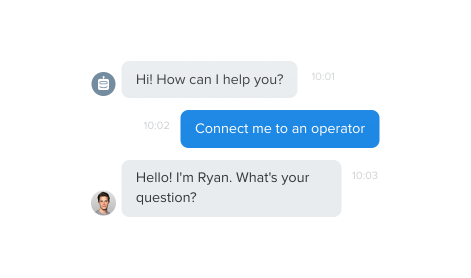
Transferring chat to a human agent
By now, the potential buyer has done all the research and is ready to make a purchase. At this stage, you should provide a seamless checkout experience.
Here, a lot depends on your website navigation, checkout page design, the number of fields, etc. If the checkout process is too complicated and requires a lot of actions, shoppers won’t complete the purchase. So first of all, you should make sure that the checkout is easy and convenient for your customers.
Once you optimize the checkout process on your website, you should think about how else you can improve the customer experience and how you can use a chatbot to make the process easier. Analyze possible reasons for cart abandonment and try to find an appropriate solution that can help your customers.
For example, according to this Baymard study, 49% of people abandon their carts because the extra costs for shipping, taxes and other fees are too high. The best solution is to lower the costs and remove all hidden costs to eliminate unwanted surprises. To convince your customers to make a purchase, your chatbot can offer a discount or a free shipping coupon.
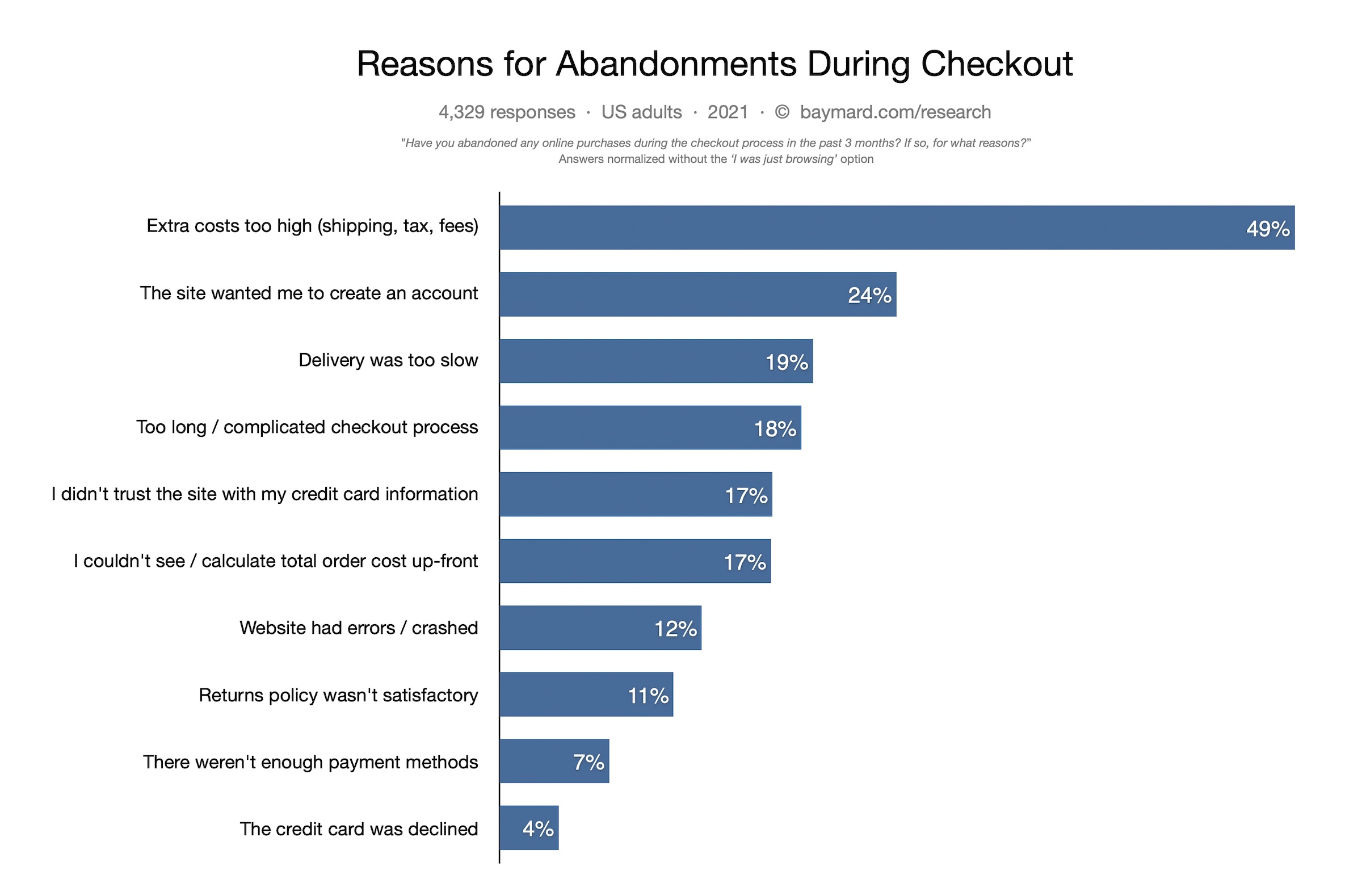
Source: Baymard.com
Another way chatbots can bring value is by guiding customers through the sales process: they can ask customers questions and redirect them to certain pages. Some companies use them to share shipping information and updates. Sometimes bots can even be used to handle payments. And finally, you can use chatbots to say thank you to your customers after the purchase is made, which is also important for customer experience.
If the consumer makes it through the previous three stages, the sale is complete. Congratulations! However, the customer journey is not over yet. Post-sale is a crucial stage where the customer forms an opinion about your brand, and it determines whether they will return to you later or not.
It is much easier and cheaper to retain an existing customer than to acquire a new one. This can be easily explained: you don’t have to spend time and resources to find a new customer and gain their trust. All you need to do is just keep an existing one happy. According to research done by Frederick Reichheld of Bain & Company, increasing customer retention rates by 5% increases profits by 25% to 95%.
“Retaining an existing customer is much easier and cheaper than acquiring a new one.”
Positive customer experiences are essential to generate loyalty and repeat purchases, so you need to ensure your customers are satisfied with your product. At the post-sale stage, you should follow up with the customer to get their feedback, and a chatbot can help you with that.
Another important thing at this stage of the customer journey is after-sales service. If it is fast and convenient, it leads to higher customer satisfaction and brand loyalty. A chatbot can ask customers if they need further help after the purchase. If support is needed, the bot can send appropriate instructions and links or offer customers to contact a human agent.
As you can see, chatbots can be easily integrated into all stages of the customer journey, but that’s not all! Let’s look at some other benefits chatbots can bring to your e-commerce business:
Want to create a chatbot for your online store? In Chaport, you can do it in just a few minutes. Let me show you how:
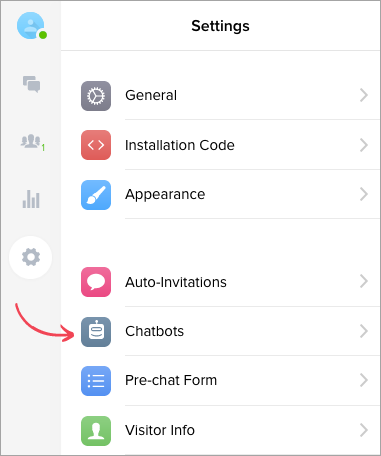
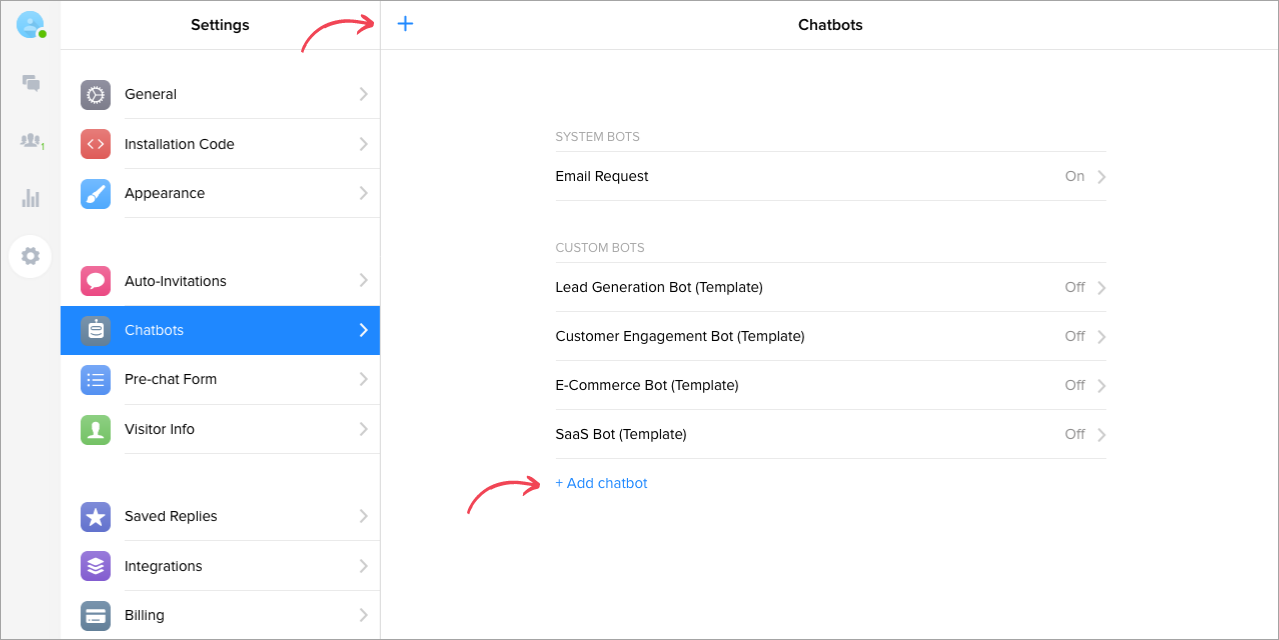
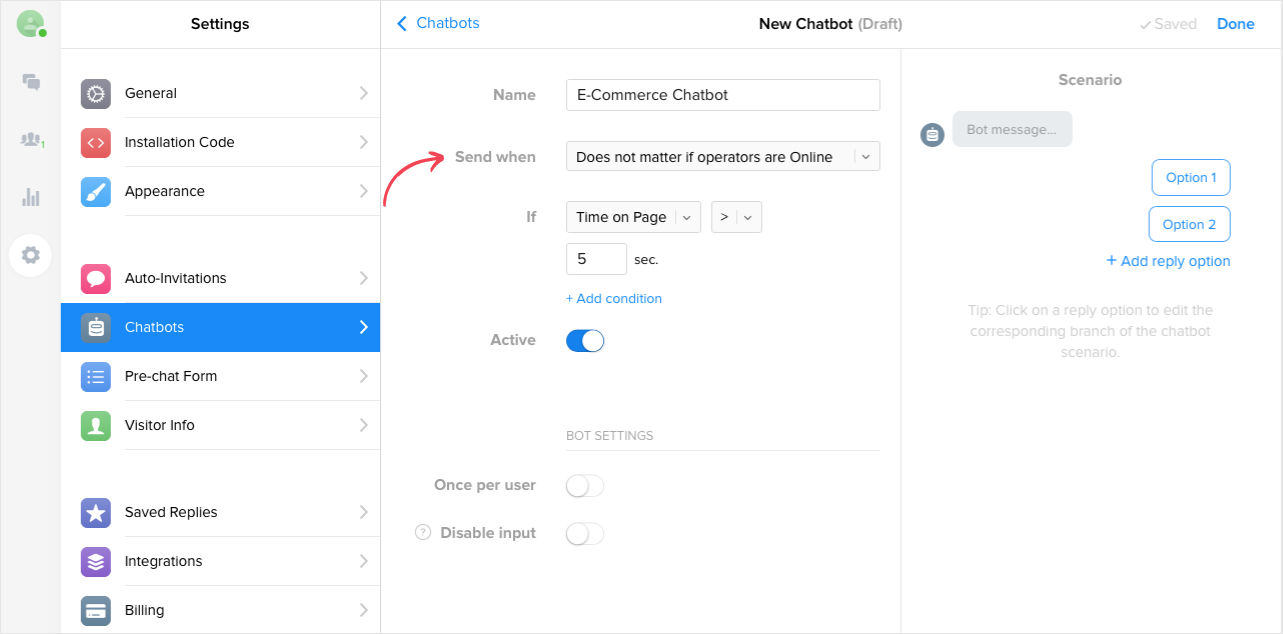
Then, we need to provide conditions that will trigger our chatbot to send a message. You can select one or more triggers from the list in the “If” section.
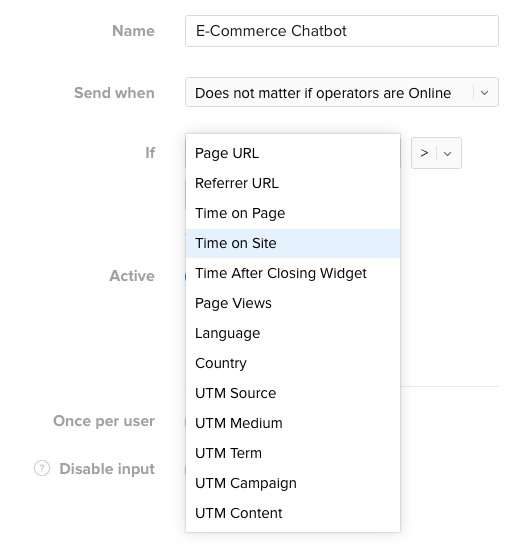
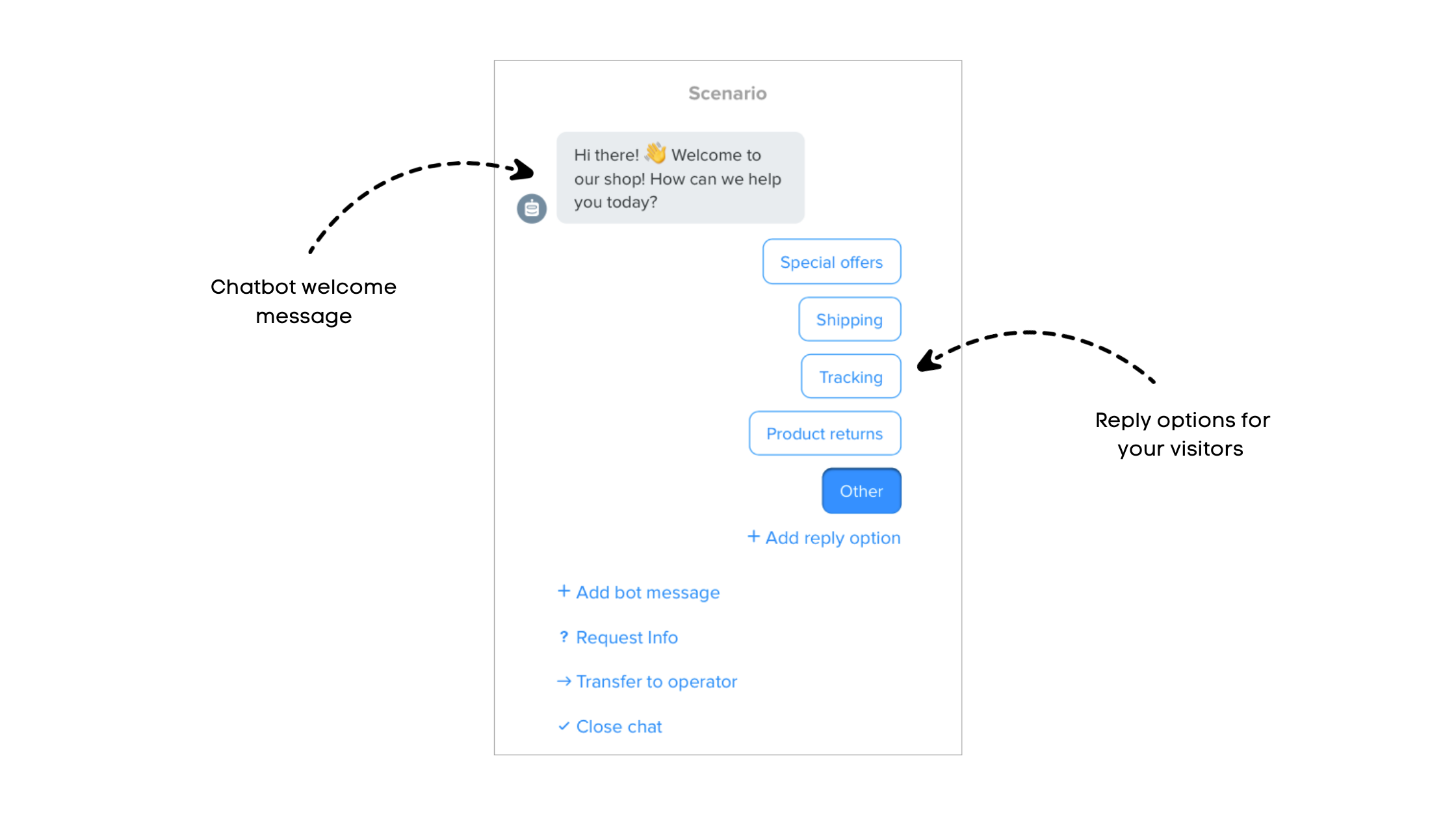
Similarly, set the bot actions after each reply option and complete the scenario. When you complete all the steps, click on “Done” in the upper right corner of the page. Now your chatbot is ready!
Consumer demands are changing faster than ever, and their buying decisions depend entirely on the experience they get. E-commerce is a highly competitive industry, so online stores need to constantly optimize the customer experience by implementing new strategies and tools. This is where chatbots come into play.
Although bots will never replace humans completely, they can greatly enhance the customer journey, making it faster and easier. Integrating e-commerce chatbots can give you a distinct competitive advantage and help you take your sales to the next level. So, what are you waiting for? Create your own chatbot today!
